mobile View, to the German Version tap the flag


- Sultanate of Oman
- absolute monarchy
- own name: Saltanat 'Oman
- former name: Masquat and Oman
• Flags
• Historical Flags
• Meaning/Origin of the Flag
• Coat of Arms
• Meaning/Origin of the Coat of Arms
• Aircraft Roundel
• Map
• Numbers and Facts
• History
• Origin of the Country's Name
• regional historical Flags:
- Imamate of Oman
- Dhofar
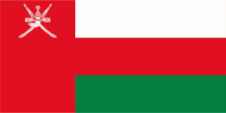
since 1995,
National and merchant flag,
ratio = 1:2,
Source, by: Flags of the World,
using commons.wikimedia.org



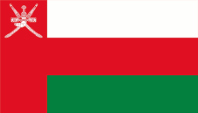
since 1995,
State flag,
ratio = 4:7,
Source, by: Flags of the World,
using commons.wikimedia.org





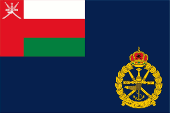
since 1995(?),
Naval flag,
ratio = 2:3,
Source, by: Flags of the World,
using commons.wikimedia.org



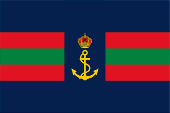
since 1995(?),
Naval jack,
ratio = 2:3,
Source, by: Flags of the World,
using commons.wikimedia.org



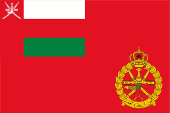
since 1995(?),
Flag of the Army,
ratio = 2:3,
Source, by: Wikipedia (EN),
using commons.wikimedia.org



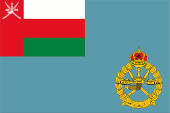
since 1995(?),
Flag of the Air Force,
ratio = 2:3,
Source, by: Wikipedia (EN),
using commons.wikimedia.org



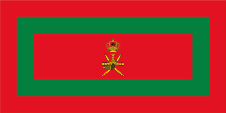
since 1995(?),
Royal flag (Flag of the Sultan),
ratio = 1:2,
Source, by: Flags of the World,
using commons.wikimedia.org





1913–1954,
Flag of the Imamate of Oman,
Source, by: Wikipedia (EN)



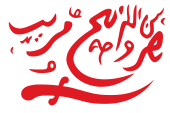
1954–1957,
Flag of the Imamate of Oman,
Source, by: Wikipedia (EN),
BlinxTheKitty, Public domain, via Wikimedia Commons




1856–1970,
Flag of the Sultanate of Masquat and Oman,
Source, by: Wikipedia (EN)




1970–1995,
National and merchant flag of Oman,
ratio – ratio = 2:3,
Source, by: Wikipedia (EN),
using commons.wikimedia.org



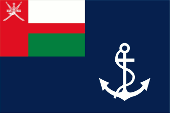
1970–1995,
Naval flag of Oman,
ratio – ratio = 2:3,
Source, by: Flags of the World, Flaggen und Wappen



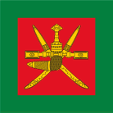
to 1995,
doubtful,
Flag of the Sultan of Oman,
Source, by: unknown,
using commons.wikimedia.org




Meaning/Origin of the Flag
The today’s flag of Oman was officially introduced on the 17th of December in 1970 in its basic pattern and it was changed a little bit in the year 1985 (change in the emblem) and in 1995 (widening of the red middle stripe) It consists of three horizontal stripes in white, red and green, and an one third broad vertical red stripe on the pole. Within the vertical red stripe in the upper staff quadrant is placed the emblem of the state (emblem of the Saidi dynasty) in white. Until 1970 the flag was single-coloured red. Red is the colour of the Kharidshitic Mohammedans. Since 1970 the flag carrys the white und the green stripe as symbolic colours for peace and fruitfulness. In an other interpretation the white field stands even for the Imamate of Oman which existed beween the years 1913 and 1957. The green should furthermore represent the fruitful province of Dhofar in the south of the country, respectively also for Jabal Akhdar, green and fruitful mountains in the north of the country. The red is also meant to remind us of the country's victorious struggles in the past. In 1995, not only was the national flag probably revised, new flags for the branches of the armed forces were probably introduced in that year, a warship naval jack and probably also a new personal standard for the Sultan. The colours red and green do not seem to be particularly specified or well defined.
Source:
Die Welt der Flaggen,
Flaggen Wappen Hymnen,
Wikipedia (EN)

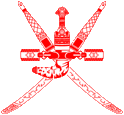
Coat of arms of Oman,
Source: Corel Draw 4

Meaning/Origin of the Coat of Arms
The emblem of Oman shows a Khanjar (Arabian dagger with bended sheath) in front of two crossed curved swords, covered with an arms-belt. That symbol is in use on coins since 1940 and since 1966 also on stamps of the Sultanate of Oman. It is the insignia of the Abu Said family, the Omani sovereign dynasty.
Source:
Flaggen Wappen Hymnen,
Wikipedia (EN)


since 1985,
Aircraft Roundel,
Source, by: Wikipedia (EN)
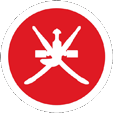
1970–1985,
Aircraft Roundel,
Source, by: Wikipedia (EN)

Location:
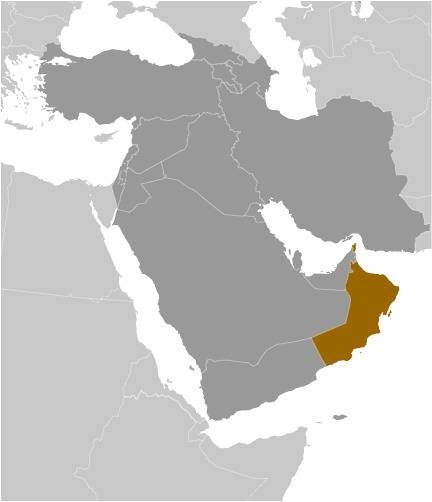
Source: CIA World Factbook
Map of the country:
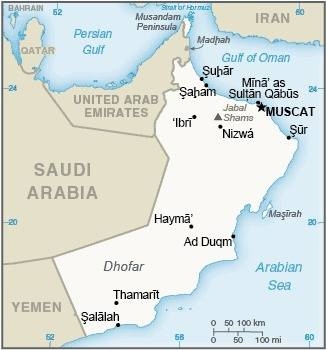
Source: CIA World Factbook

Numbers and Facts
Area: 119.498 square miles
Inhabitants: 4.800.000 (2020), 54% Arabs, 30% Indians, Pakistani, Bengali, Sinhalese
Religions: 86% Muslim, 6,5% Christian, 5,5% Hindu
Density of Population: 40 inh./sq.mi.
Capital: Muscat (Masqat), 635.279 inh. (2020?)
official Language: Arabic
other Languages: English, Baluchi, Swahili, Urdu
Currency: 1 Rial Omani (OMR, OR, RO) = 1 000 Baizas
Time Zone: GMT + 4 h
Source:
Wikipedia (D),
CIA World Factbook

2700–2000 B.C. · culture of Umm-an-Nahr, State of Makan in the north of the today’s Oman
1800 B.C. · decline of the Umm-an-Nahr Culture
500 B.C. · Persian conquest
2nd cent. A.D. · immigration of the Azd-tribe from Yemen, foundation of the Empire of the Azd under the dynasty of Yulanda
since 643 A.D. · Islamization
7th–8th cent. A.D. · decline of the Empire of the Azd, subjection by the Persians of the Sassanide-Empire, in the 8th cent. propagation of the tenets of the Kharidshites
751 · election of the first Imam (leader) of the Kharidshites
8th–10th cent. · flowering period as turntable of trade
1065–1140 · invasion of the Seljuks
1256 · conquest by Persian troops
1507 · debarkation of the Portugese, conquest of Maskat, Sur and Sohar
1650 · withdrawal of the Portugese, gradual expansion of the Oman Empire along the African eastern coast in southern direction
1720–1746 · war of succession
1746 (even 1741? or 1744?) · seizure of power by the until today reigning Sultanes of the Said-dynasty
ca. 1800 to 1850 · shifting of the economical emphasis to Zanzibar
1824 · shifting of the residency of the Sultan to Zanzibar
1829 · the Country of Dhofar becomes dependent from Oman
1856 · death of the Sultan, in result of British pressure division of the country (division of the dynasty in two lines) in the Sultanate of Oman and the Sultanate of Zanzibar, economical decline of Oman
1879 · the Country of Dhofar becomes annexed by Oman
1885–1886 · rebellion in Dhofar
1891 · the Sultanate of Oman becomes a British protectorate
1891–1913 · further economical decline, policy of isolation exercised by the Sultans
1913 · election of an Imam (Salim Ibn Rashid al-Kharusi) by disappointed Kharijites (Ibadits), proclamation of the Imamate of Oman with the capital Nizwa, civil war
1920 · death of Imam Salim Ibn Rashid al-Kharusi, peace-treaty between his successor Abd Allah al-Khalili al-Kharusi and the Sultan of Oman, the Sultanate of Oman becomes de facto divided and names itself from then on Sultanate of Masquat and Oman (Masquat is the seat of the Sultan of Oman, Nizwa is the seat of the Imam of Oman)
1954 · death of Imam Abd Allah al-Khalili al-Kharusi, election of Ghalib Ibn Ali al-Hinawi to the new Imam, the Imamate attempts now – with support by Egypt and Saudi-Arabia – to achieve the full independence, civil war
1957 · conquest of Nizwa by Omani and British troops, overthrow of the Imam Abd Allah al-Khalili al-Kharusi
1959 · capitulation of the last troops of the Imamate of Oman, re-naming of the country from "Sultanate of Masquat and Oman" in "Sultanate of Oman"
1962 · first findings of oil
9th of June 1965 · onset of the armed struggle of the Dhofar Liberation Front (DLF)
March 1975 · the Dhofar rebels come to an agreement of peace with Oman
1979 · once more conflicts in Dhofar
1991 · nomination of a consultive counsel
November 1996 · first constitution
1997 · suffrage for women
1998 · Oman starts military cooperation with Iran
May 1999 · frontier contract with the United Arab Emirates
Source: 1.) DB special edition: Wikipedia - spring 2005, 2.) World Statesmen, 3.) Wikipedia (DE)

Origin of the Country's Name
The name of the country was already mentioned as "Omana" by Pliny the Elder and Ptolemy also mentions an "Omanon". The name can also be derived from Arabic, from the word "aamen" or "amoun", which denotes a sedentary population. There are also names of historical figures who are invoked as mythical founders: Oman bin Ibrahim al-Khalil, Oman bin Siba' bin Yaghthan bin Ibrahim, Oman bin Qahtan.
Source: Wikipedia (EN)

- 1913–1957 constituent state within Oman

1913–1954,
Flag of the Imamate of Oman,
Source, by: Wikipedia (EN)




1954–1957,
Flag of the Imamate of Oman,
Source, by: Wikipedia (EN),
BlinxTheKitty, Public domain, via Wikimedia Commons



The Sultanate of Oman was divided since 1913. In Masquat resided the Sultan and in Nizwa since 1913 the Imam of Oman. The Imamate of Oman was only formally subordinated the Sultan of Masquat and attempts in 1954 to untie itself from Great Britain and Masquat and to achieve the independence. After a civil war the Imamate was terminated and in 1959 incorporated to Masquat. The Imamate of Oman used a single-coloured white flag. The colour Farbe white stands in the Islamic-Arabian world for the dynasty of the Omajiades, a dynasty of Califs which has its roots in the fifth Calif Moawija I.

- separatist state
- 1971–1975 separated from Oman
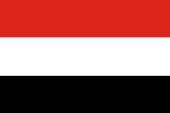
1965–1975,
National flag of Dhofar,
Source, by: World Statesmen



The to Yemen bordering Countryside of Dhofar (Zufar, Dhufar) was annexed by the Sultanate of Oman not until 1879. There were again and again riotings against the Omani reign. In the year 1964 broke out then an open civil war. Until 1970 was the whole country in the hand of separatists and in 1971 was established an own government. South Yemen gave massive support. Dhofar was able to withstand until 1975. After the armistice of March 1975 was given up the armed struggle nearly complete. Dhofar used a flag which was resembling the flag of the National Liberation Front in South Yemen. Sometimes the colours became upturned or Arabian signs were added in the white stripe.


![]()



















































